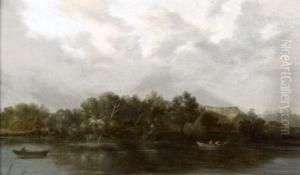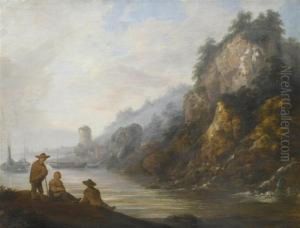Jacobs Sibrandus Mancadan Paintings
Sibrandus Jacobs Mancadan, born in 1585 in Friesland, a province in the northern Netherlands, was a multifaceted figure known not only for his work as a painter but also for his roles as a tax collector, mayor, and even as a gold- and silversmith. Mancadan's life and career were deeply intertwined with the cultural and political dynamics of the Dutch Golden Age, a period marked by significant economic prosperity, cultural achievements, and the flourishing of the arts within the Dutch Republic.
Despite his engagement in various professions, Mancadan is most celebrated for his contributions to the Dutch painting tradition, particularly in the realm of landscape painting. His works are distinguished by their idyllic, pastoral scenes imbued with a sense of tranquility and a meticulous attention to detail. Mancadan's landscapes often feature rolling hills, classical ruins, and pastoral figures, elements that reflect the influence of the Italianate style prevalent among Dutch artists of the period who sought inspiration from the Italian landscape and its classical heritage.
Mancadan's artistic output, however, was relatively limited, partly due to his commitments to his other professions. It is believed that he turned to painting later in life, which might explain the scarcity of his works. Despite this, his paintings were highly regarded by his contemporaries and continue to be appreciated for their aesthetic qualities and contribution to the Dutch landscape genre.
The exact details of Mancadan's training as an artist remain unclear, but it is evident that he was part of a network of artists and patrons that facilitated his development and exposure. His work, characterized by its serene beauty and technical skill, captures the essence of the Dutch landscape tradition, while also offering a unique, personal perspective that distinguishes his work from that of his peers.
Mancadan's death in 1634 marked the end of a career that, while not solely dedicated to the arts, contributed significantly to the cultural landscape of the Dutch Golden Age. Today, his paintings can be found in various museums and collections, serving as a testament to his artistic legacy and the enduring appeal of the Dutch landscape tradition.

